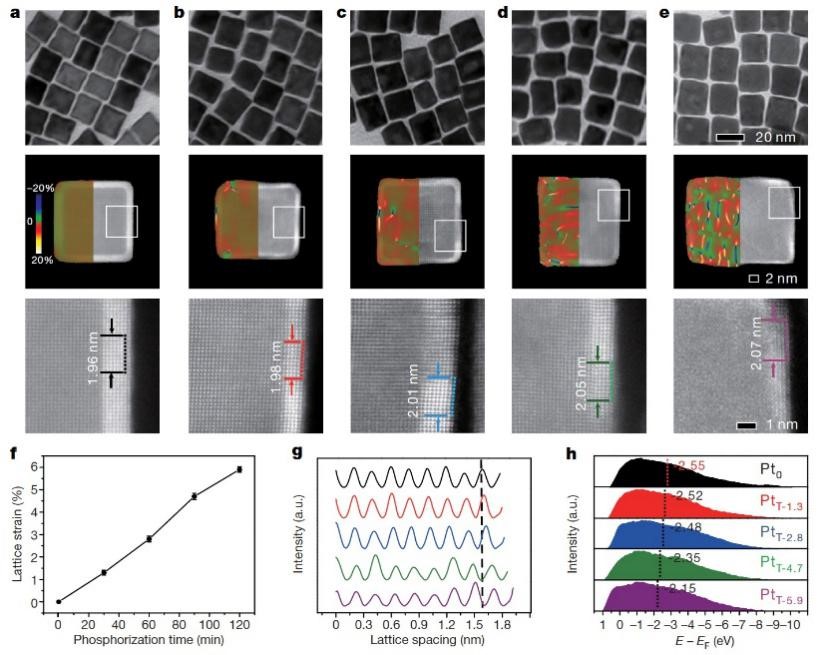Recently, Prof. Jianbo Wu from the School of Materials Science and Engineering, State Key Laboratory of Metal Matrix Composites and Center for Hydrogen Science of Shanghai Jiao Tong University (SJTU), together with Prof. Mingshang Jin from Xi'an Jiaotong University (XJTU) and Prof. Yadong Yin from the University of California, Riverside (UC Riverside), published their research work “Mastering the surface strain of platinum catalysts for efficient electrocatalysis” online in the prestigious international journal 《Nature》on the topic of stress modification on platinum surfaces for efficient electrocatalysis. Prof. Jianbo Wu is the co-corresponding author. Mr. Fenglei Shi, a PhD student at SJTU, is the co-first author. Link to the paper: https://www.nature.com/articles/s41586-021-03870-z.

Figure. 1. Published in Nature.
Platinum catalysts are currently the most significant class of catalysts in the energy field. The strain modification can control the distance between platinum atoms, thereby modulating their electronic structure and changing their electrocatalytic performance in certain reaction systems. However, it is challenging and interesting to achieve accurate and continuous strain modification on the surface of platinum catalysts. This work proposed a method to systematically modulate the strain of Pt atoms on the surface of Pd nanocubes by creating expansion and contraction effects in the Pd lattice through phosphorization/dephosphorization processes (Figure. 2). The degree of tensile and compressive strain on surface Pt atoms is continuously and controllably regulated by the degree of phosphorylation and dephosphorylation (Figure. 3 and 4). The characterization of the strain first requires atomically resolved characterization of the nanoparticles by aberration-corrected scanning transmission electron microscope, with multiple imaging superimposed on each atom (column) for localization, followed by geometric phase analysis to characterize the stress distribution of the nanoparticles. The work was difficult, tedious, and challenging, it was carried out by Mr. Fenglei Shi, a PhD student at SMSE, SJTU.

Figure. 2. Schematic diagram of lattice strain of ultrathin Pt shells deposited on Pd-based nanocubes controlled by (a) phosphorylation and (b) dephosphorylation processes.

Figure. 3. Characterizations of unstrained and tensile-strained Pt shells.

Figure. 4. Characterizations of compressive strained Pt shells.
Finally, after the electrochemical performance tests, they found that Pt lattice strain strongly impacts catalytic activity: the strain-activity relationship followed an M-shaped curve for methanol oxidation reaction and a volcano-shaped curve for the hydrogen evolution reaction. The best-performing catalysts outperformed most of the Pt and PdPt bimetallic catalysts reported previously in terms of activity, and also showed good stability. The strain tuning strategy in this study not only enables fundamental exploration of how strain impacts Pt electrocatalysis but also offers a promising route for fabricating high-performing Pt catalysts for renewable energy conversion reactions.
This work was supported by the National Natural Science Foundation of China, the National Key Research and Development Program of China, and the Joint Research Centre for Hydrogen Science and Clean Energy Materials of Shanghai Jiao Tong University.
